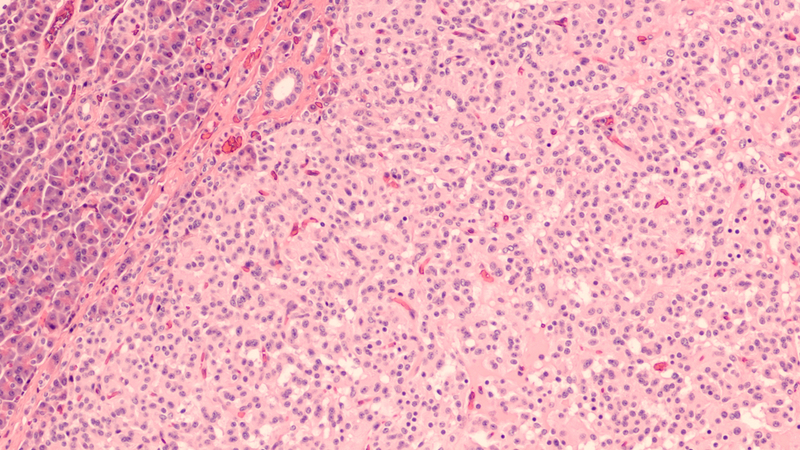New targeted radiation therapy increases survival for patients with neuroendocrine tumors
University of Kansas Cancer Center news Aug 01, 2018
A new study has found that combining octreotide with lutetium Lu 177 dotatate injection increases patients' median, progression-free 20-month survival to 65% versus 10% for octreotide alone.

The University of Kansas Cancer Center is one of the first in the region to offer patients lutetium Lu 177 dotatate injection (Lutathera), approved by the FDA earlier this year. Lutetium Lu 177 dotatate injection provides advanced, targeted nuclear medicine radiation therapy to cancer patients with primary neuroendocrine tumors of the small bowel and pancreas. This life-threatening cancer can metastasize to organs such as the liver.
Until now, octreotide therapy to slow or stop tumor growth was the standard of care. Octreotide is a more effective synthetic version of somatostatin, a growth inhibiting hormone occurring naturally in the body.
"Combining octreotide with lutetium Lu 177 dotatate injection increases patients' median, progression-free 20-month survival to 65% versus 10% for octreotide alone," says Wendell Yap, MD, nuclear medicine specialist at The University of Kansas Health System.
Patients receive lutetium Lu 177 dotatate injection intravenously with an amino acid that protects their kidneys from radiation. The process takes 4-6 hours. After their infusion, patients don't need to avoid human contact. Although they are slightly radioactive, they receive a much lower dose of radiation compared to highly radioactive nuclear medicine therapies such as Iodine 131 or Yttrium 90.
At the cancer center, patients receive four lutetium Lu 177 dotatate injection infusions, one every 2 months. Each infusion is followed by an injection of long-acting octreotide to inhibit tumor growth until the next infusion. After their last infusion, patients receive octreotide for up to 18 months, depending on whether the cancer grows or metastasizes.
Raed Al-Rajabi, MD, medical oncologist at the cancer center, is optimistic about Lutathera's future. "It could be primary, secondary and tertiary treatment as long as the patient meets the criteria," he says. "It's one of the tools that we can use to take care of this cancer for a very long time."
-
Exclusive Write-ups & Webinars by KOLs
-
Daily Quiz by specialty
-
Paid Market Research Surveys
-
Case discussions, News & Journals' summaries